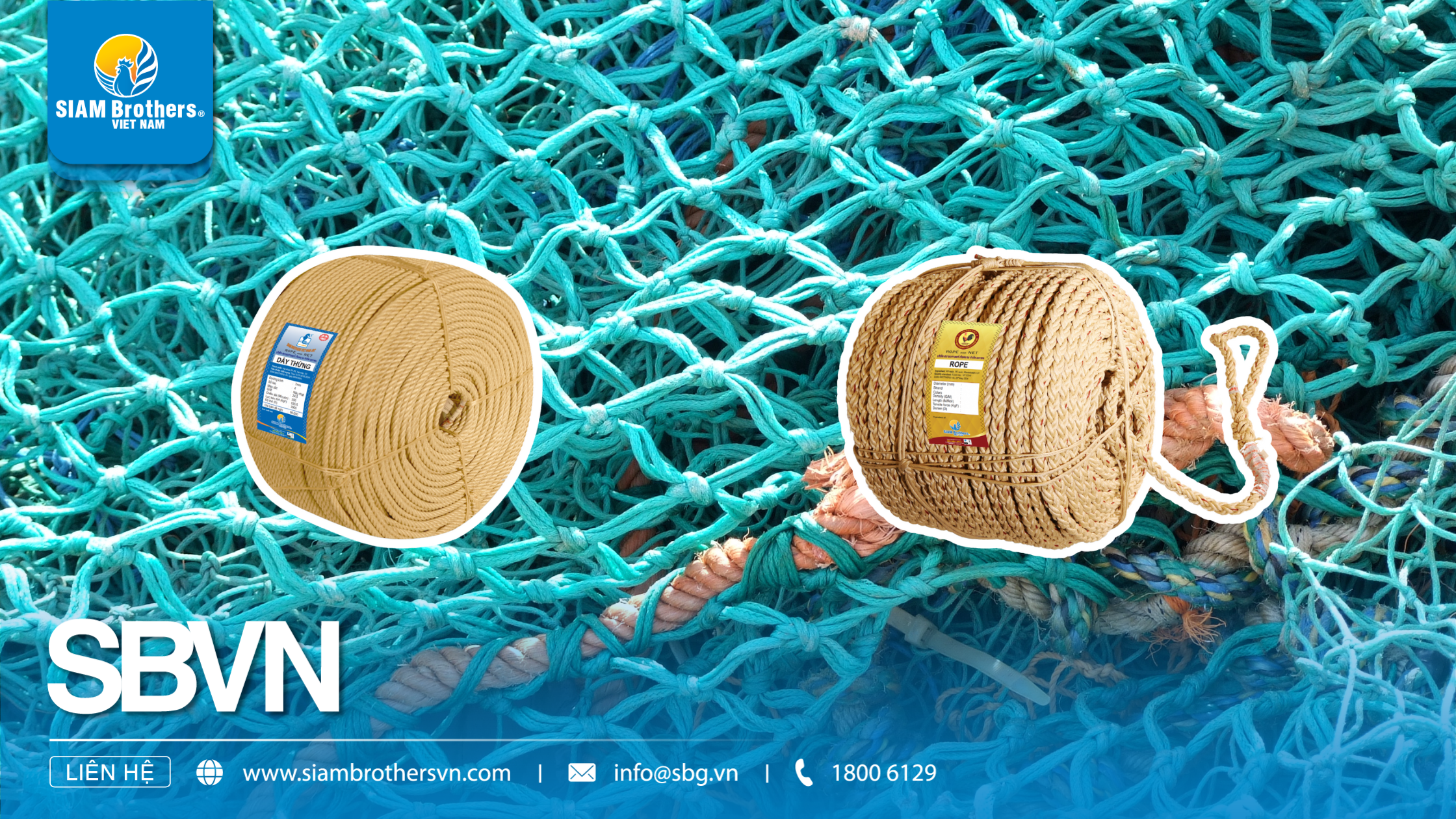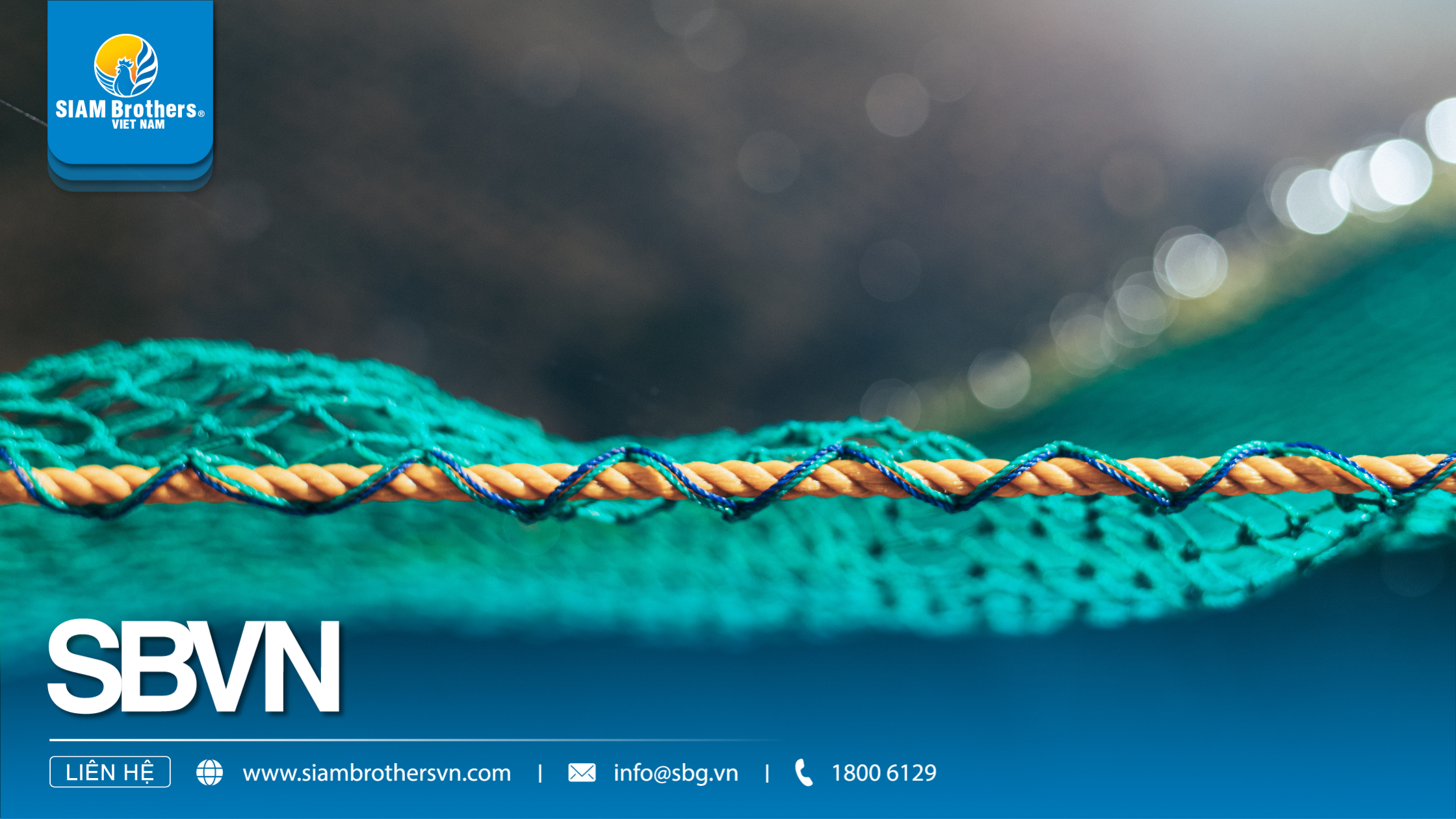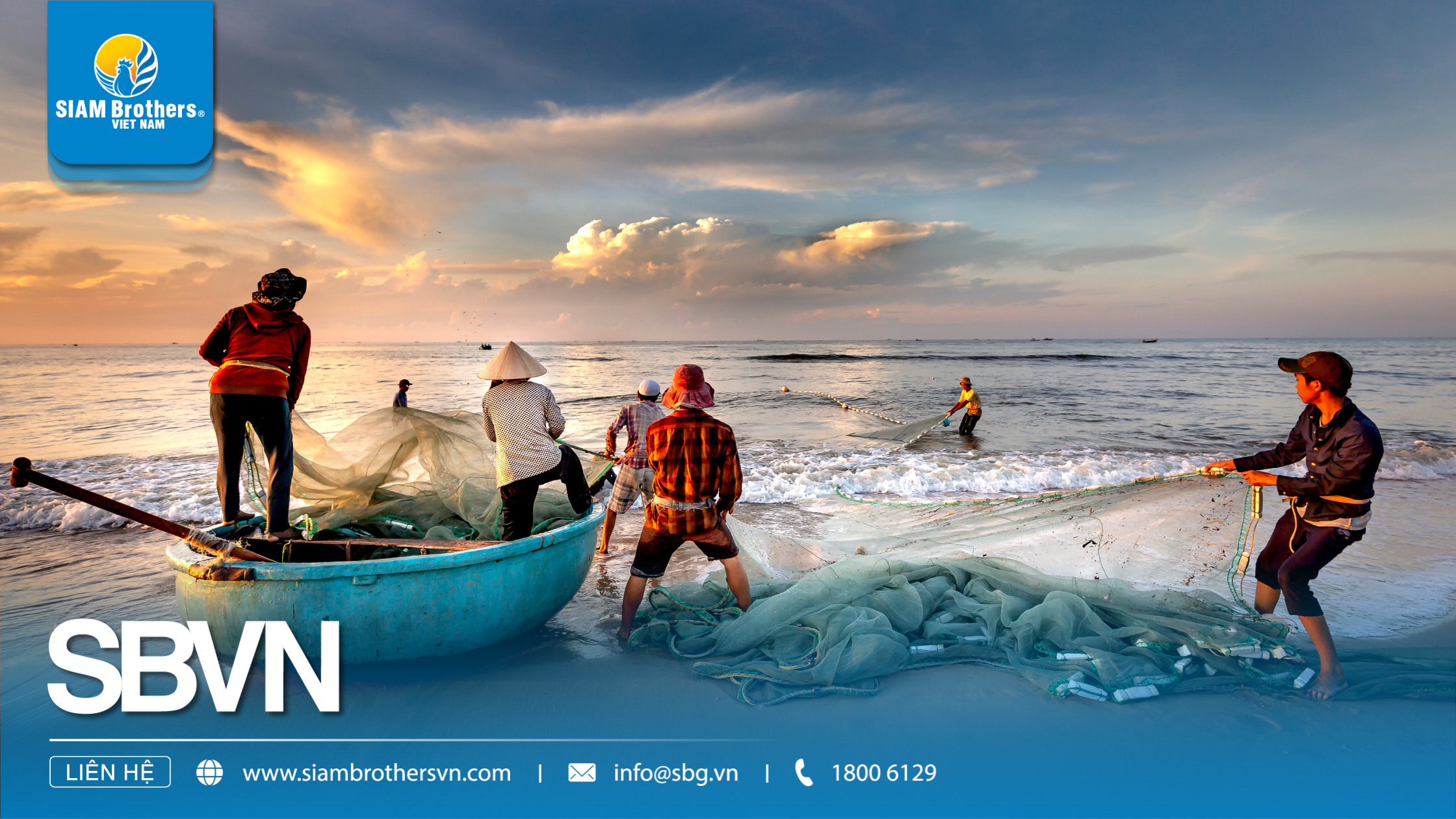Among the most popular materials today, Polypropylene and Nylon stand out as the top contenders widely used in the fishing industry. So, which type of fishing rope should you choose for durability, performance, and cost-effectiveness? In this article, SIAM Brothers Vietnam breaks down the pros and cons of each material, offering expert insights from our experienced team – a leading fishing rope manufacturer in Vietnam.
Fishing ropes are specialized ropes designed for marine environments – where high humidity, continuous operation, and superior durability are required. Depending on the material used, these ropes serve various fishing needs and adapt to different working conditions.
 Fishing ropes play a vital role in every stage of seafood harvesting – Source: SIAM Brothers Vietnam
Fishing ropes play a vital role in every stage of seafood harvesting – Source: SIAM Brothers Vietnam
Related topics:
 Polypropylene (PP) fishing ropes have gained popularity for their lightweight and exceptional water resistance – Source: Internet
Polypropylene (PP) fishing ropes have gained popularity for their lightweight and exceptional water resistance – Source: Internet
 Nylon fishing ropes (Polyamide – PA) stand out for their exceptional strength and flexible elasticity - Source: Internet
Nylon fishing ropes (Polyamide – PA) stand out for their exceptional strength and flexible elasticity - Source: Internet| Criteria | Polypropylene Fishing Ropes (PP) | Nylon Fishing Ropes (PA) |
| Weight | Lighter, floats on water | Heavier, sinks in water |
| Load-bearing strength | Medium, suitable for moderate loads | Very high, ideal for heavy pulling or anchoring |
| Elasticity | Low – minimal stretch | High – absorbs shock, reduces equipment wear |
| Water, moisture, and salt resistance | Excellent, does not absorb water |
Absorbs moisture, requires post-use drying
|
| Abrasion resistance | Average – may wear quickly on rough surfaces | Excellent – highly durable in harsh environments |
| Lifes | Long, if properly used and stored | Longer, withstands frequent use |
| Cost | More affordable – fits small/medium budgets | Higher – a long-term investment for larger operations |
 Choosing the right fishing rope is not just about personal preference—it requires evaluation based on technical performance and fishing conditions - Source: Internet
Choosing the right fishing rope is not just about personal preference—it requires evaluation based on technical performance and fishing conditions - Source: InternetAbsolutely. Many fishermen use polypropylene ropes for floating sections and easy handling, while reserving nylon ropes for main anchoring or heavy-load areas—striking a balance between cost-efficiency and safety.
 Frequently Asked Questions about Fishing Ropes - Source: Internet
Frequently Asked Questions about Fishing Ropes - Source: Internet
Also Read: Are Rope Nets Durable? How to Identify High-Quality Fishing Nets for Professionals
Whether you choose polypropylene or nylon fishing ropes, each offers unique benefits tailored to different needs. Polypropylene is lightweight, floats on water, and is cost-effective—ideal for nearshore fishing or small-scale vessels. Meanwhile, nylon stands out for its superior durability and abrasion resistance, making it suitable for long offshore journeys and more demanding conditions.
Advice from SIAM Brothers Vietnam:
Begin with your actual needs—fishing environment, load capacity, and frequency of use—to make the right choice. Selecting the right fishing rope from the start will help you sail with confidence and optimize maintenance costs in the long run.
Source: SIAM Brothers Vietnam
Contact us:
Address: 5th floor, VRG Building, 177 Hai Ba Trung Str., Vo Thi Sau Ward, Disc. 3, Ho Chi Minh City, Vietnam
Tel: (+84) 28 38 912 889
Hotline: 1800 6129
Facebook: www.facebook.com/siambrothersvn
Email: info@sbg.vn
Youtube: youtube.com/@siambrothersvietnam1728
OA Zalo: zalo.me/1402339229697925373
App SBVN ID:
CHPlay: https://bit.ly/SBVNID-Android
Appstore: https://bit.ly/SBVNID-iOS
